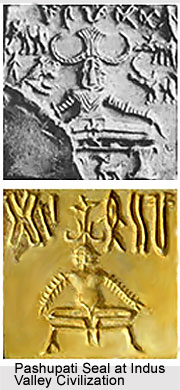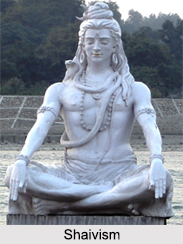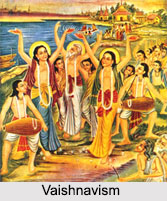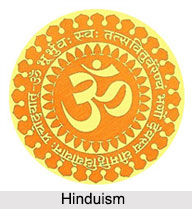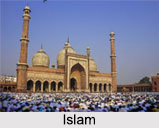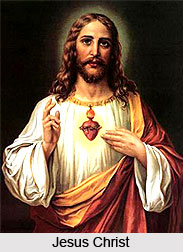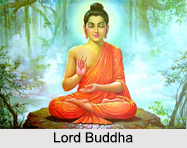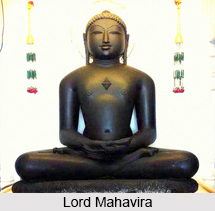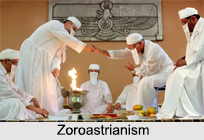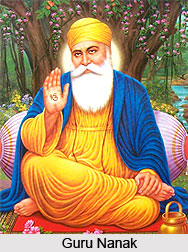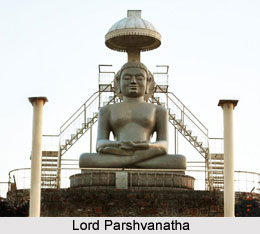 Shri Ahichchhatra Teerth located in Uttar Pradesh is a Jain pilgrimage centre. The teerth kshetra is situated in the vicinity of Ramnagar Village and is an Atishaya Kshetra i.e. Place of Miracles. The temple is dedicated to Lord Parshvanatha, the twenty-fourth Tirthankara.
Shri Ahichchhatra Teerth located in Uttar Pradesh is a Jain pilgrimage centre. The teerth kshetra is situated in the vicinity of Ramnagar Village and is an Atishaya Kshetra i.e. Place of Miracles. The temple is dedicated to Lord Parshvanatha, the twenty-fourth Tirthankara.
History of Shri Ahichchhatra Teerth
According to history Shri Ahichchhatra Teerth dates back to the ancient times. Earlier the teerth belonged to the times of Bhagawan Adinath and was known as `Sankhyavati`, Chhatravati`, Ahikshetra.` As per the inscriptions from the 2nd century to 6th century this place was called as Ahichchhatra. The name has been found on `Yaksha Statue` and `Clay Stamp of Gupta period.` Bhagwan Rishabh Dev had established 52 Janapadas. This city served as the capital of `Panchal Janapada`. Later it was divided into Northern Panchal and Southern Panchal. Ahichchhatra was the capital of Northern Panchal. In Mahabharata Northern Panchal was ruled by Dronacharya and Southern Panchal was ruled by King Drupada.
About 2800 years ago Lord Parshvanatha attained `Keval Gyan` in Ahichchhatra through deep `Tapashcharan`. During his penance `Samvar Dev`, his opponent tried various measures to create obstacles. `Dharnendra` soon realised his intentions and in order to save Parshvanatha he Dharnendra raised him on his hood and Padmawati Devi spread her hood above him. Dharnendra thus remained unsuccessful in his plans. Parshwanatha thus got enlightened by `Keval Gyan.` The first Samavsharan of Lord Parshvanatha was held here by Lord Kuber on the order of Lord Indra and his `Divya Dhwani` was delivered here.
Since its construction the temple has been repaired and reconstructed in the year 1975. The `Panch Kalyanaka Mahotsava` was also organized at the auspicious guidance of Acharya Vimal Sagarji, Acharya Kunthu Sagarji and Acharya Shanti Sagarji in the year 1978. The idol of Lord Munisuvrat Swami is believed to possess miraculous powers. Devotees from far off places visit the temple to offer their prayers. It is believed that if prayed with all devotion the Lord fulfils the wishes of the pilgrims.
Archaeology of Shri Ahichchhatra Teerth
According to the Chinese traveller Hieun Tsang Ahichchhatra was spread over an area of 3 miles. Many Stupas and idols were also built here and its remains can be seen here. All these idols belong to Digambar Jain tradition. Many ancient coins were also excavated that belong to the `Mitravanshi Kings.` As per reference the Mitravanshi Kings were followers of Jainism.
Temple of Shri Ahichchhatra Teerth
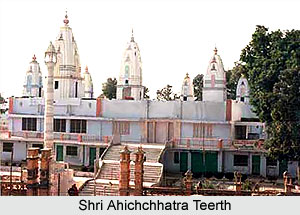 The temple of Shri Ahichchhatra Teerth houses the idol of Lord Parshvanatha. The temple has been magnificently decorated with intricate artistic designs. The creative temple work boast about the skills of the craftsmen. The idol of the lord is catechu in colour and is seated in a padmasana posture. The idol has been beautifully carved from a single stone and looks very appealing. There are 7 altars with 7 spires inside the courtyard of the temple. These altars are described below:
The temple of Shri Ahichchhatra Teerth houses the idol of Lord Parshvanatha. The temple has been magnificently decorated with intricate artistic designs. The creative temple work boast about the skills of the craftsmen. The idol of the lord is catechu in colour and is seated in a padmasana posture. The idol has been beautifully carved from a single stone and looks very appealing. There are 7 altars with 7 spires inside the courtyard of the temple. These altars are described below:
First Altar: It is known as altar of `Tikhal Wale Baba.` It is believed to have been built by the Gods of heaven. A green coloured emerald statue of Lord Parshvanatha is installed here. A rock inscription can also be seen here.
Second Altar: This altar is located on the left side of the sanctum. It houses the idol of Lord Mahavira. The idol is 6 feet in height and is seated in a padmasana posture.
Third Altar: This altar houses the idol of Lord Parshvanatha that looks very attractive. The idol is 5 feet in height and is surmounted by 11 serpent hoods.
Fourth Altar: The attractive `Samavsharan Mandir` is built here. It was constructed under the guidance of Acharya 108 Shri Ajit Sagarji in the year 1990. The altar houses the idol of Lord Parshvanatha. The idol faces the four sides and looks very attractive. It relates the memories of the first Samavsharan of Lord Parshvanatha.
Fifth Altar: The altar is dedicated to Parshvanatha that is surmounted by 11 serpent hoods. It is a The 7 feet high idol seated in a padmasana posture.
Sixth Altar: There are three idols in this temple carved on a stone slab. The idols are light brown in colour. The idol of `Panch Balyati` is one among these. The idol of Lord Parshvanatha surmounted by serpent hoods is also installed here. It is in Khadagasana posture. Another idol of Bhagwan Rishabh Dev is also carved on a stone slab. It is 3.5 feet in height. Images of Yakshas and Yakshanis are also present on both sides of idol. These idols are said to be about one thousand years ancient.
Seventh Altar: This altar houses the idol of Lord Parshvanatha surmounted by7 serpent hoods. It is black in colour. Other than these the idol of `Panch Balyati` of `Ashtadhatu` (Alloy of eight metals) is installed here. The second idol present here is combined idol of Lord Shantinath, Lord Kunthunath and Lord Aranath. These are of brown in colour and have been unearthed from the ground.
The Temple of Shri Agashi Teerth organises many annual gatherings and functions. A Fair is held every year from the eighth to the thirteenth day of the dark half of the moth of Phalgun. There are provisions for dharamshalas or rest houses for the pilgrims. These are well equipped with all modern facilities. Apart from this there are Upashrays, an Ayambilshala and a Jnanabhandar. The temple is enclosed by scenic beauty that mesmerises and fascinates the pilgrims. Thus the calm and tranquil environment and the surrounding greenery make it a suitable place for religious activities. The kshetra is well connected to road, rail and air. Taxi services and bus services are easily available here from Delhi, Meerut, Aligarh, Lucknow, Kasganj and Badaun. The nearest railway station of Ovla of the Bareilly District is a distance of 13 kilometers from the temple. The closest airport is located at Delhi that is 250 km from here.
